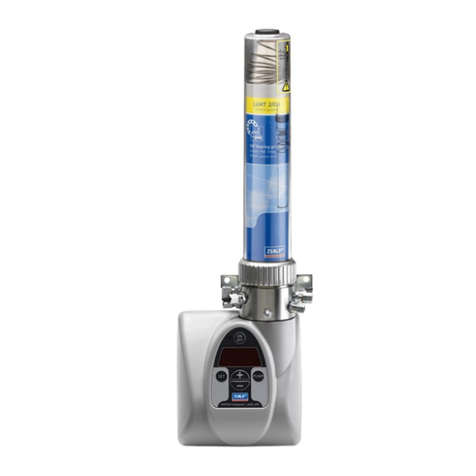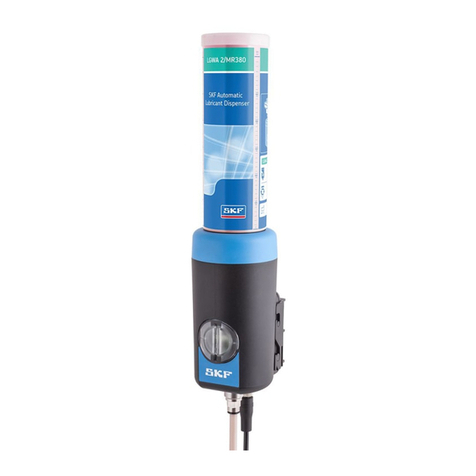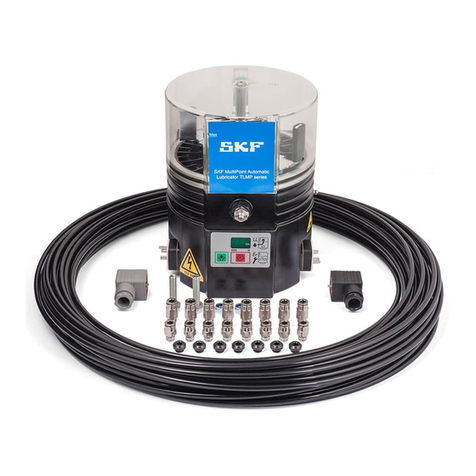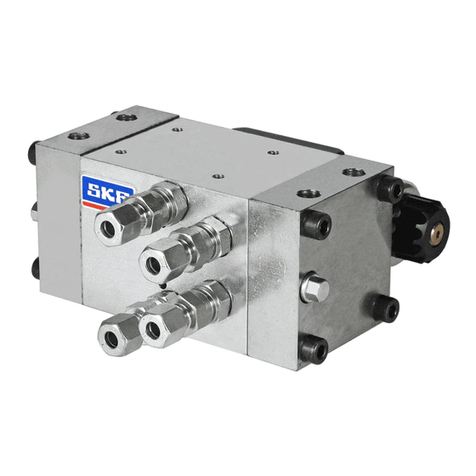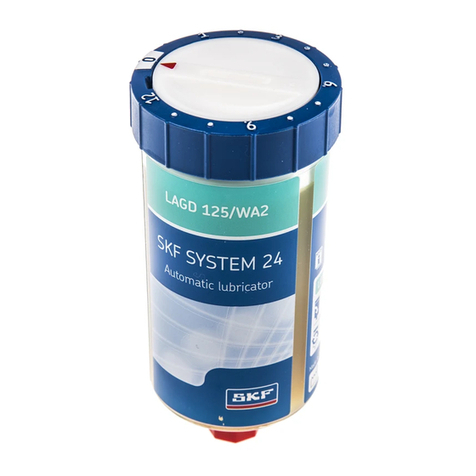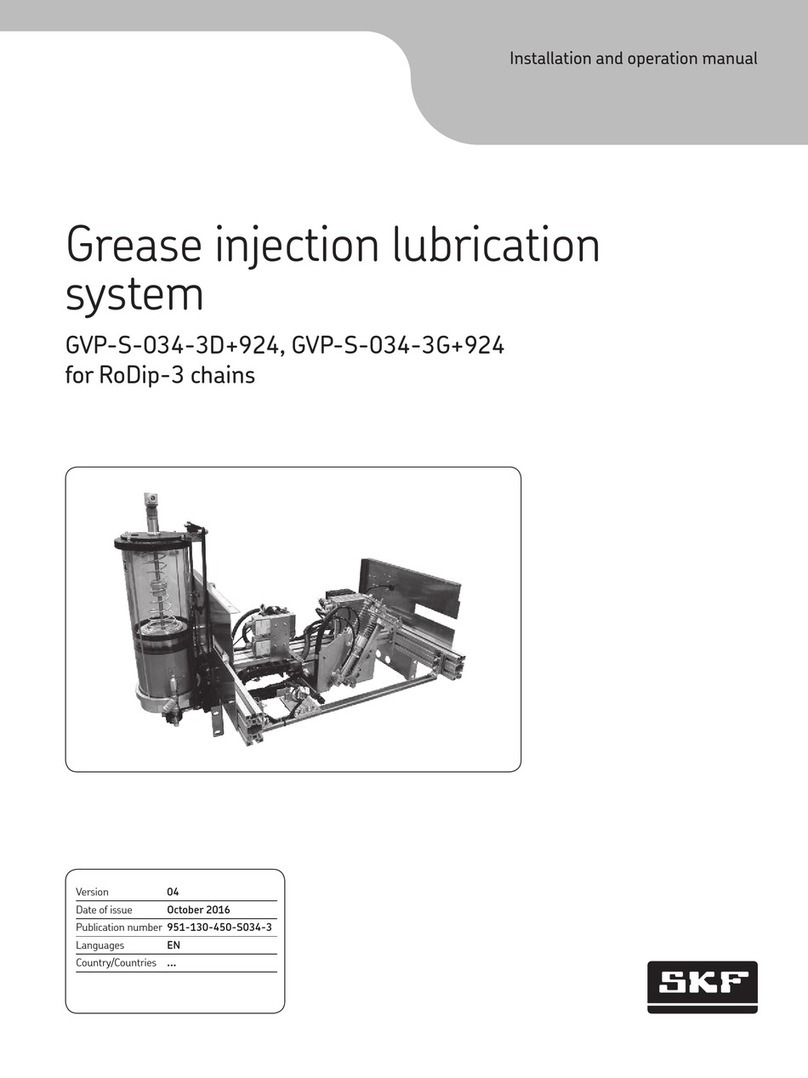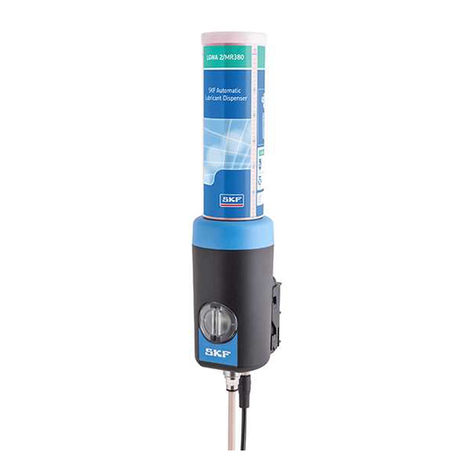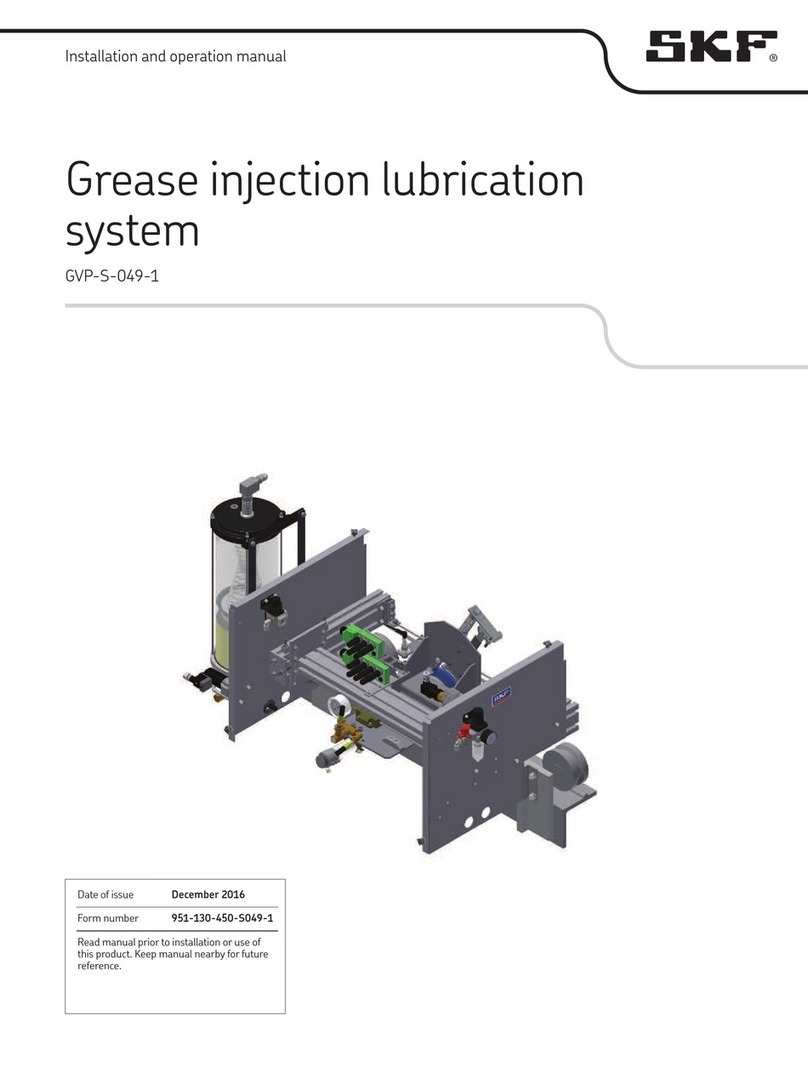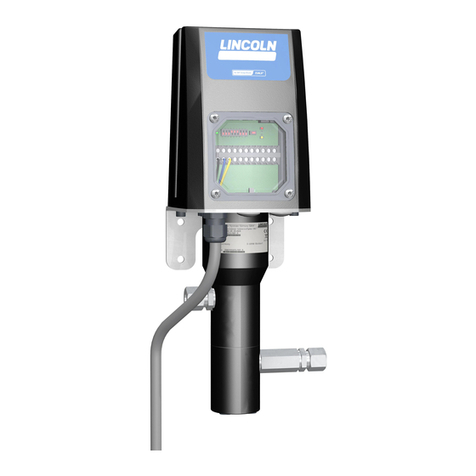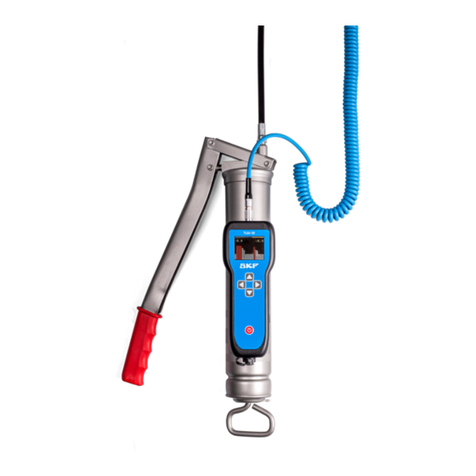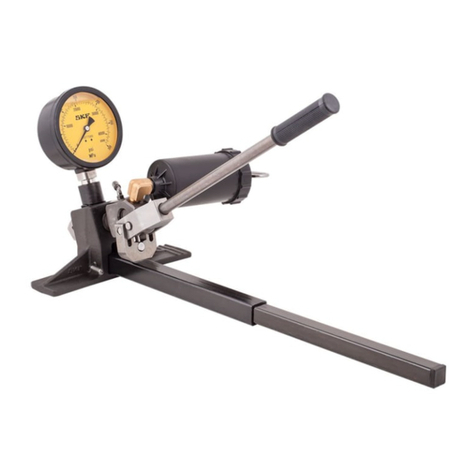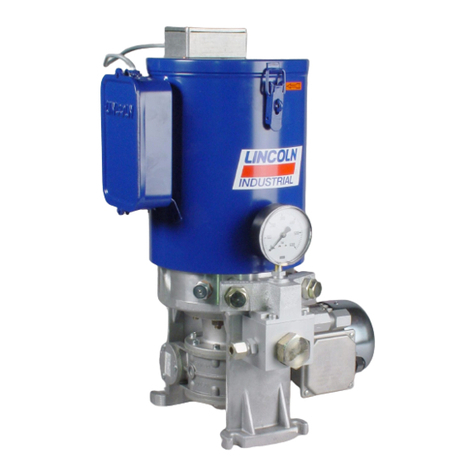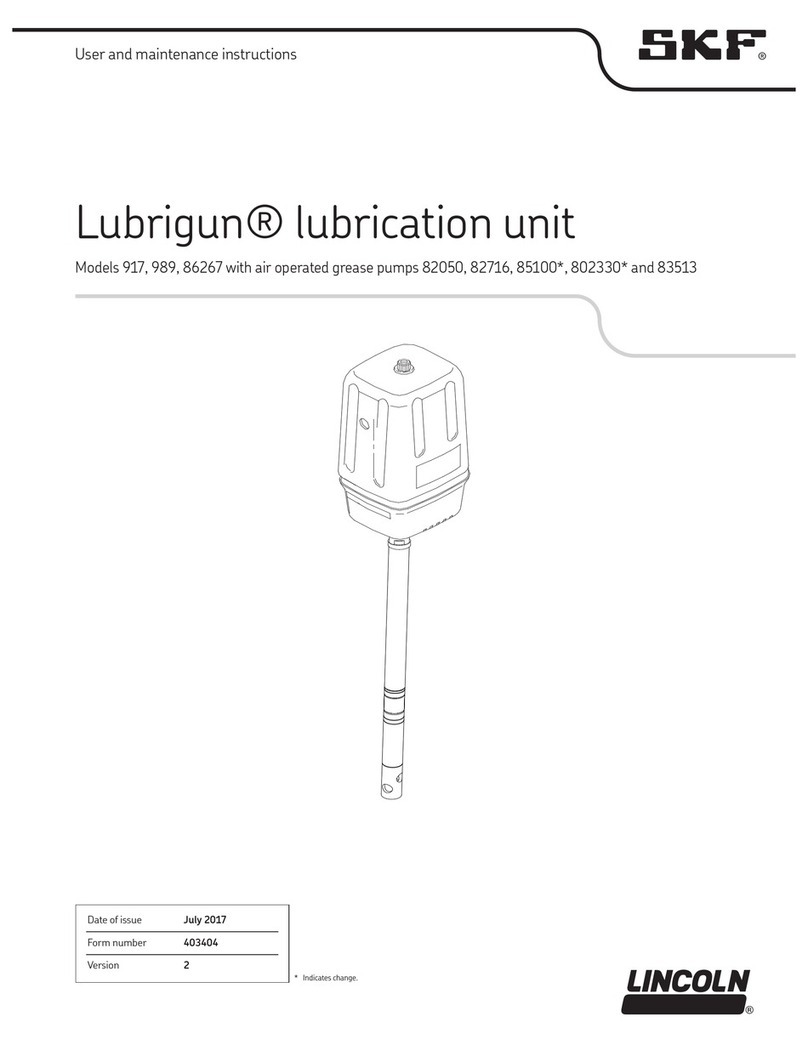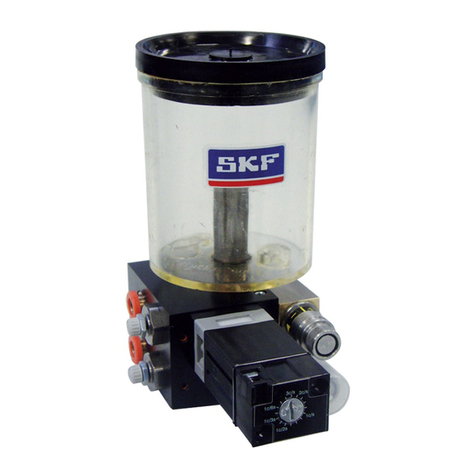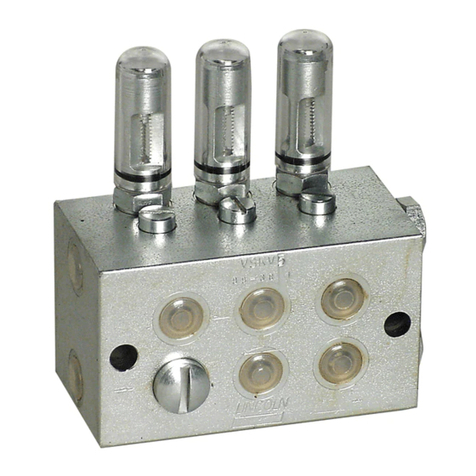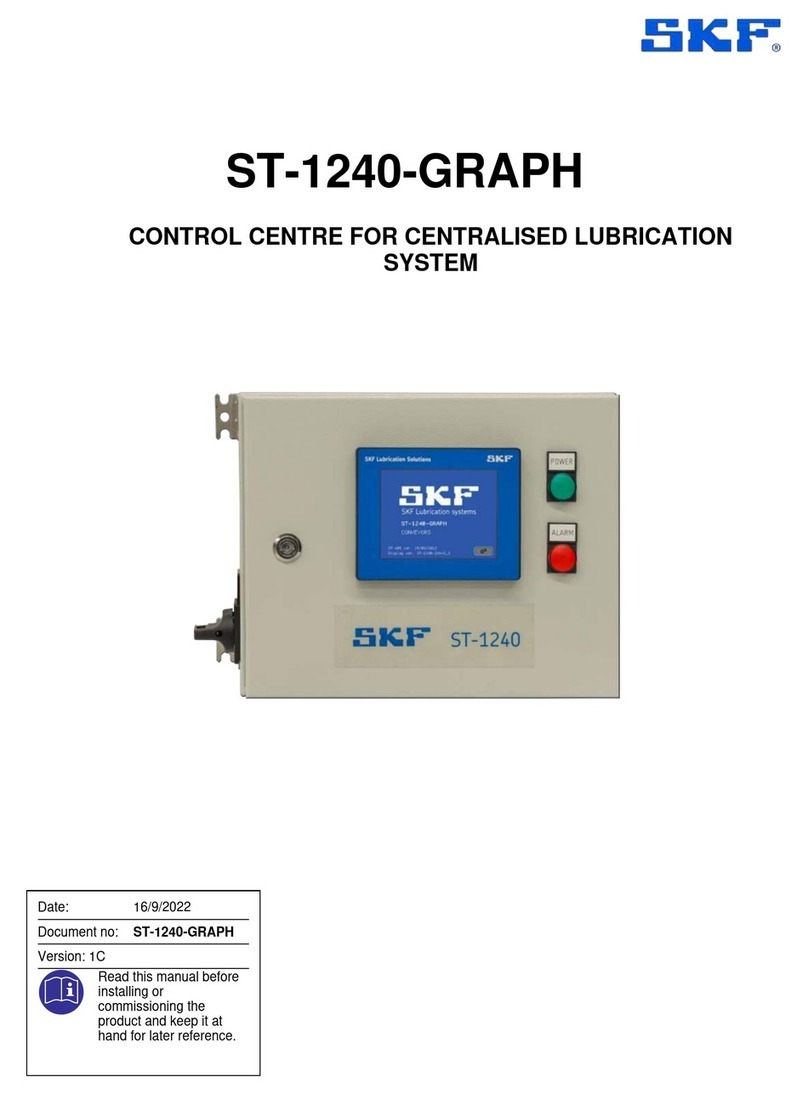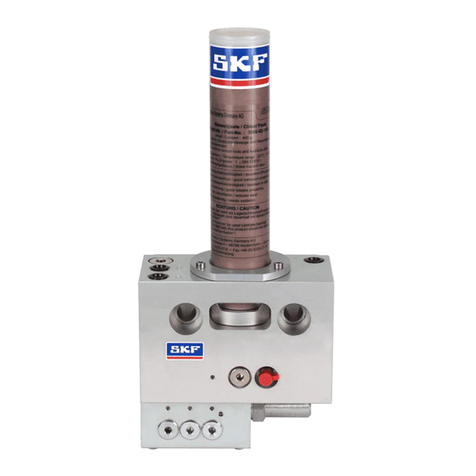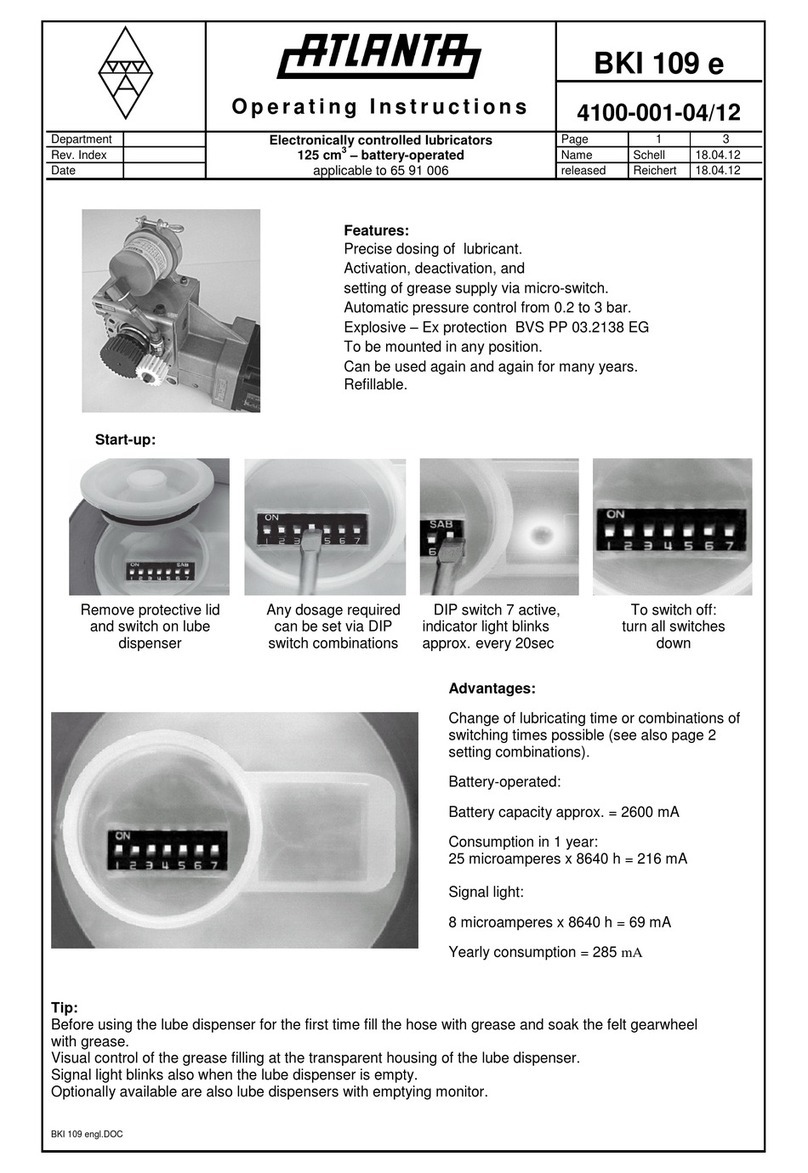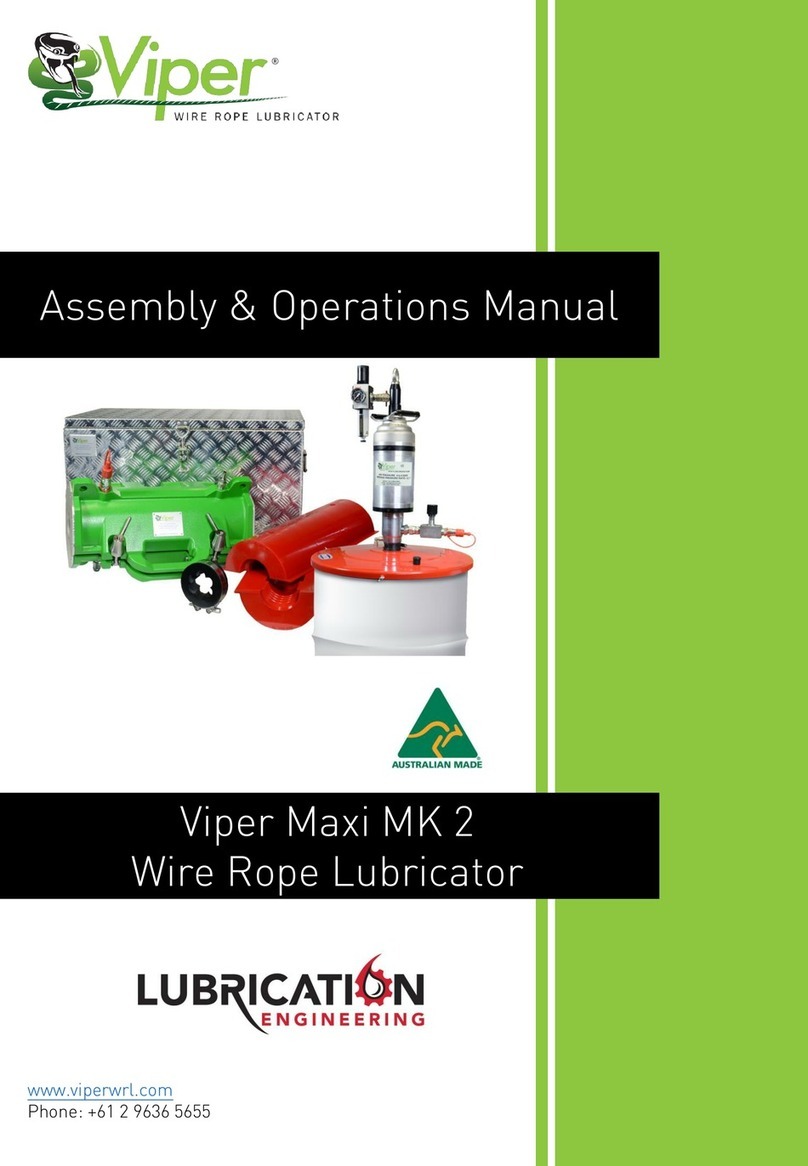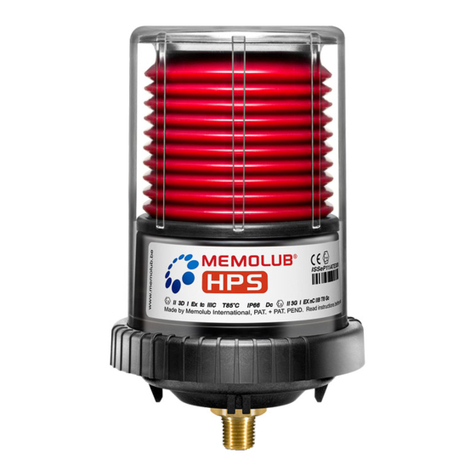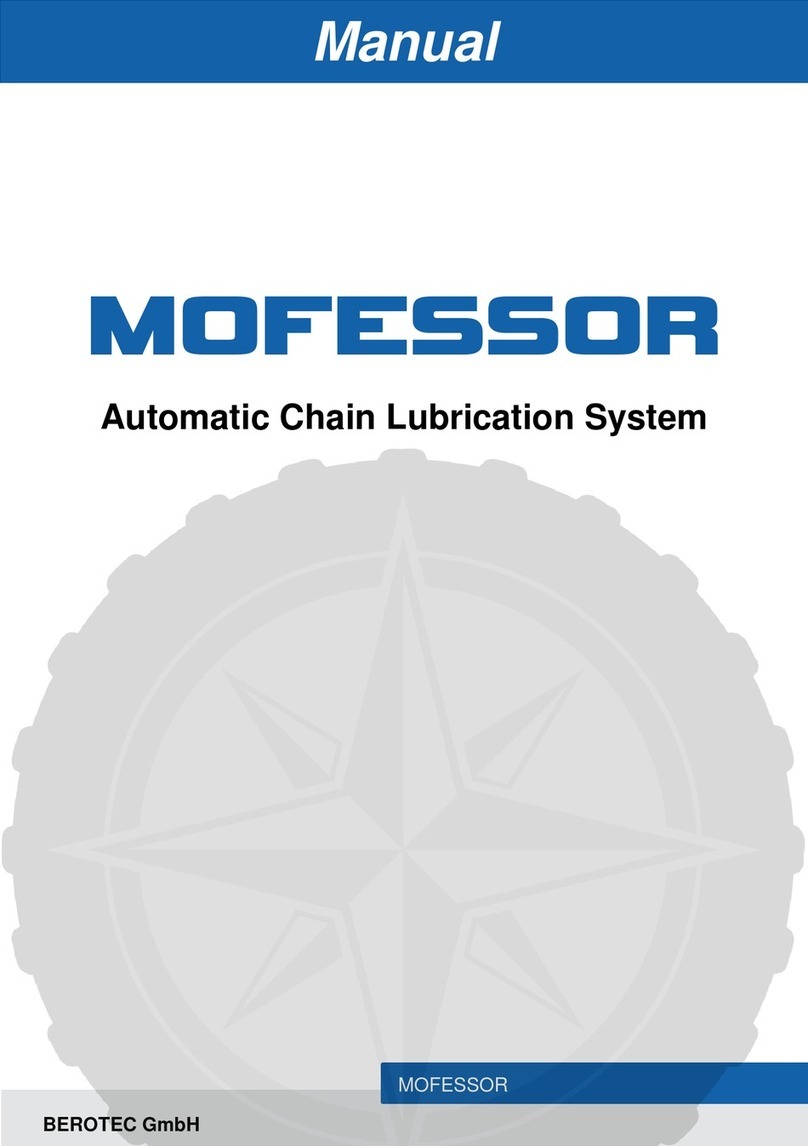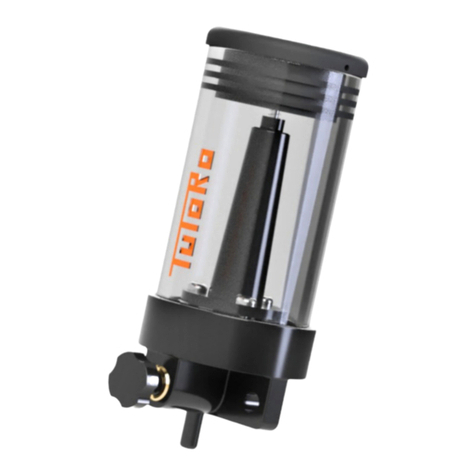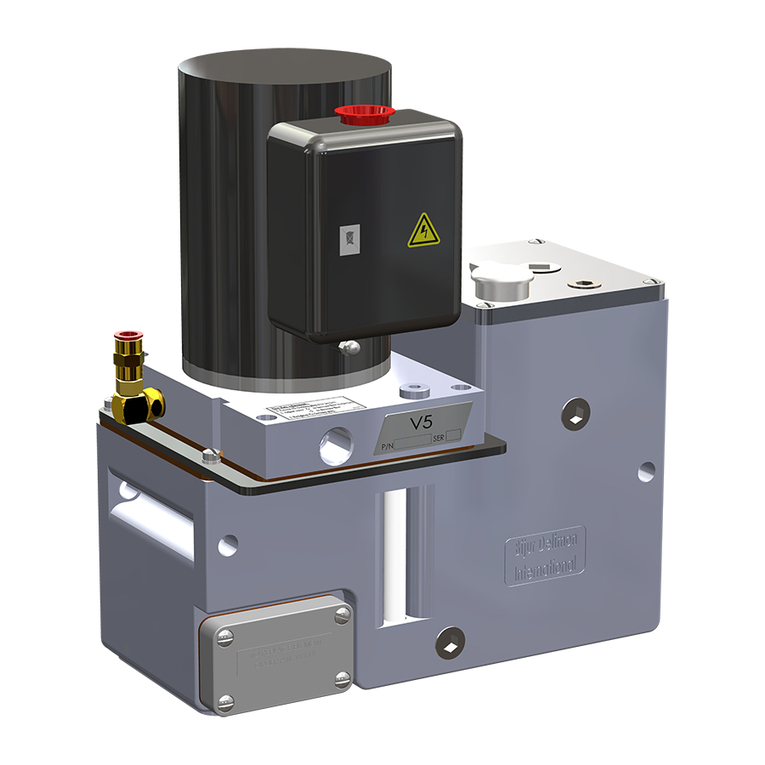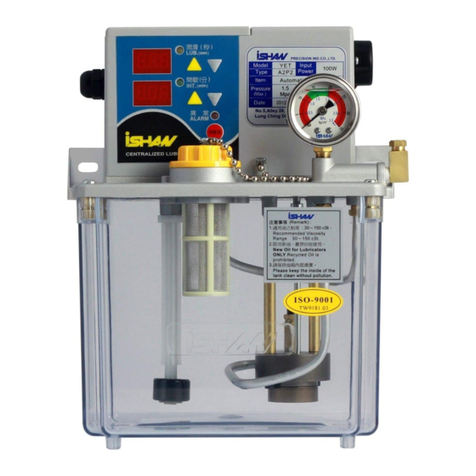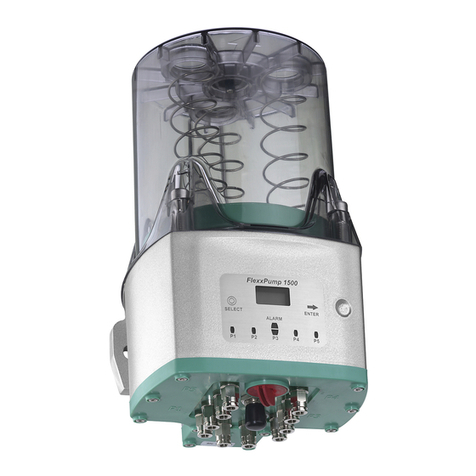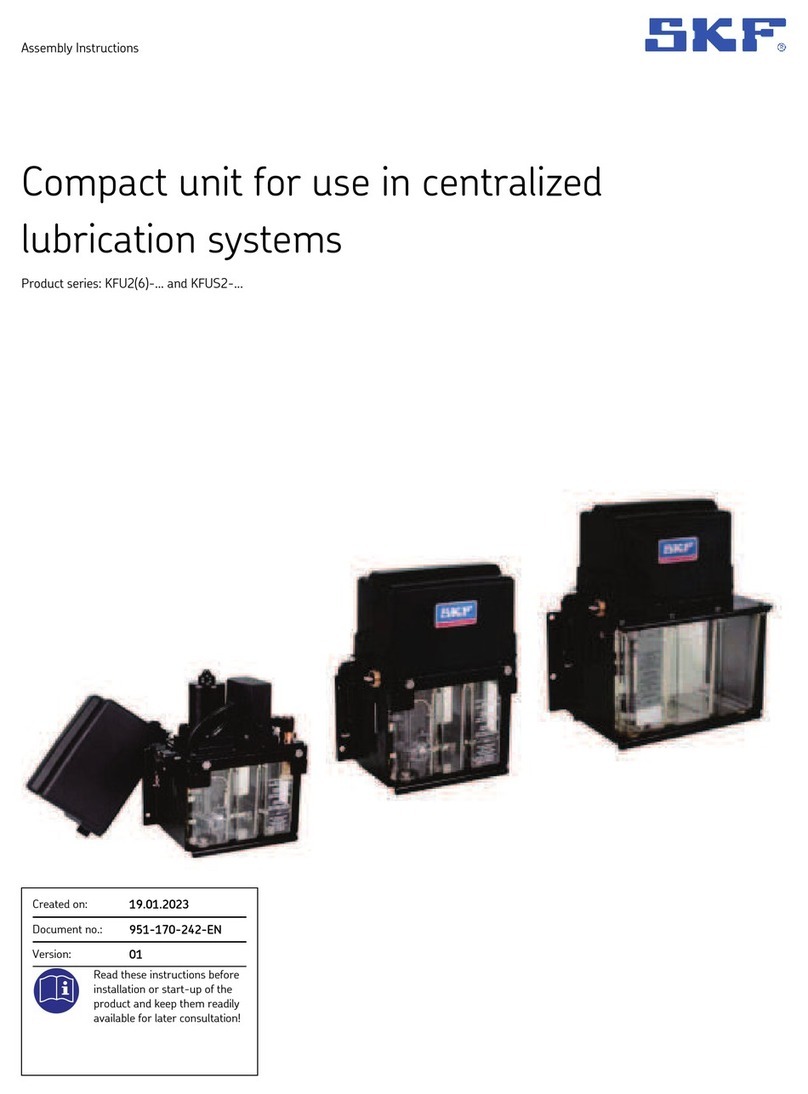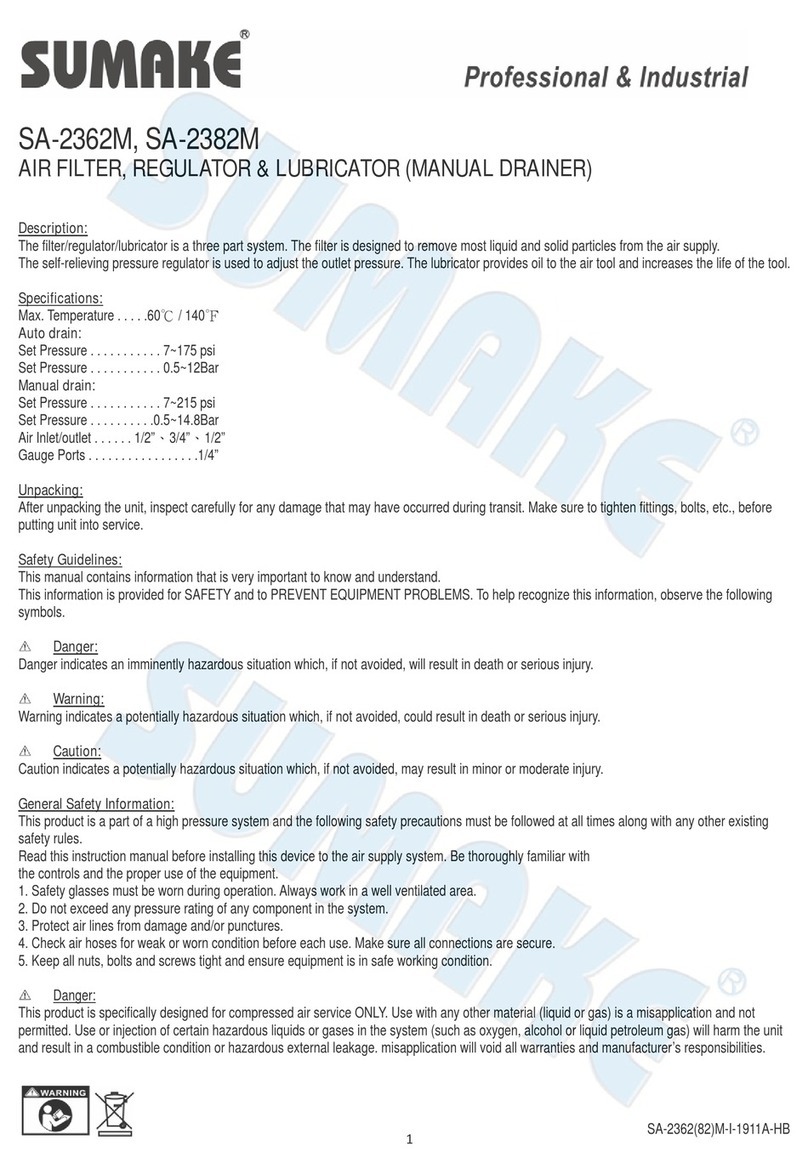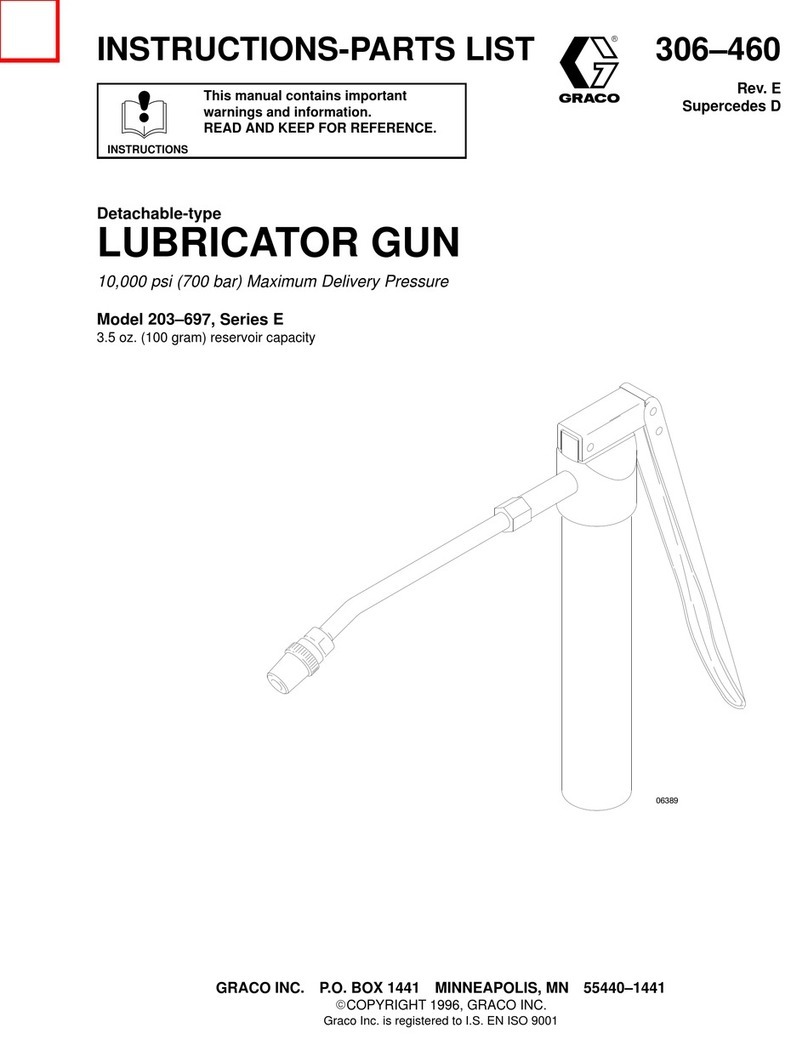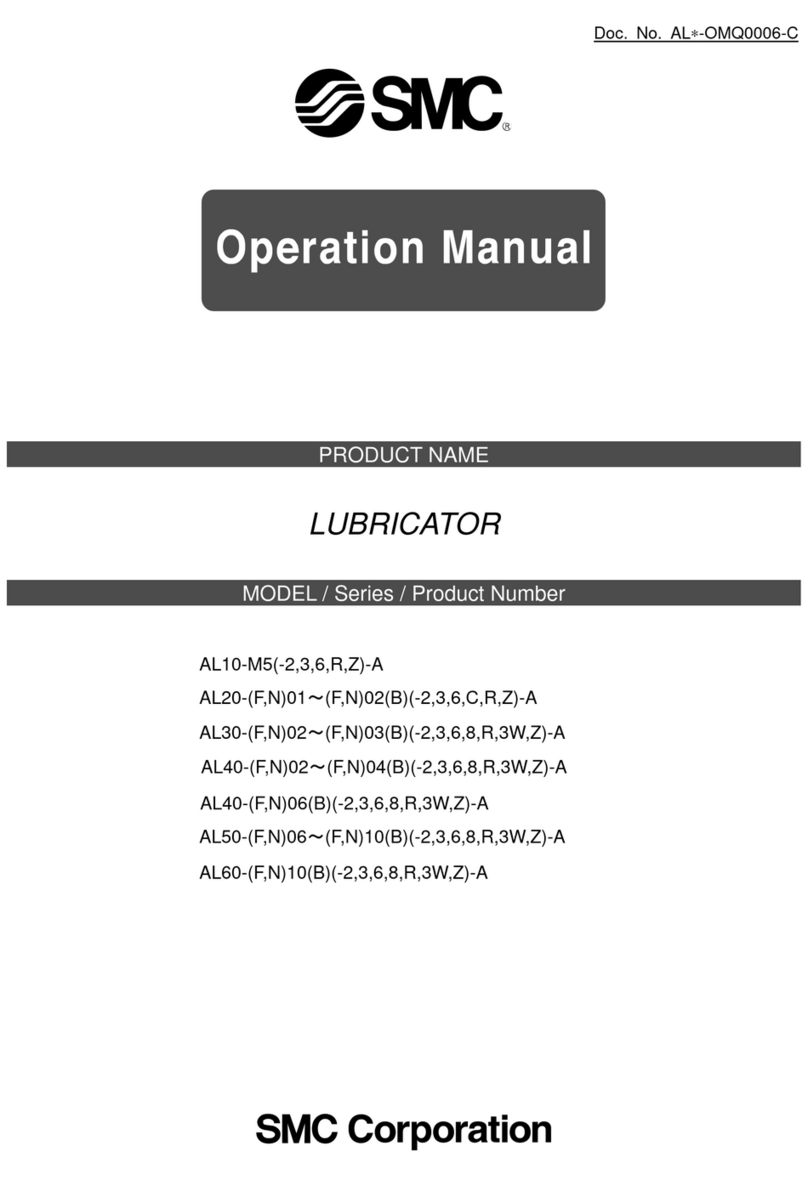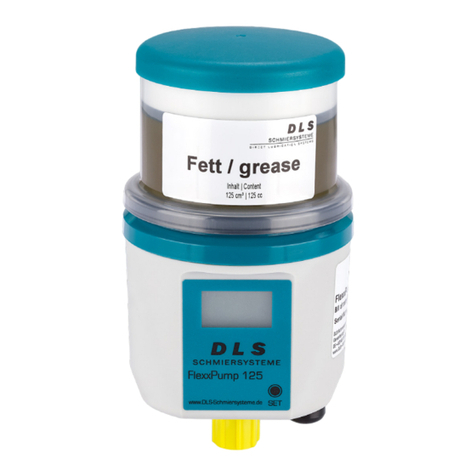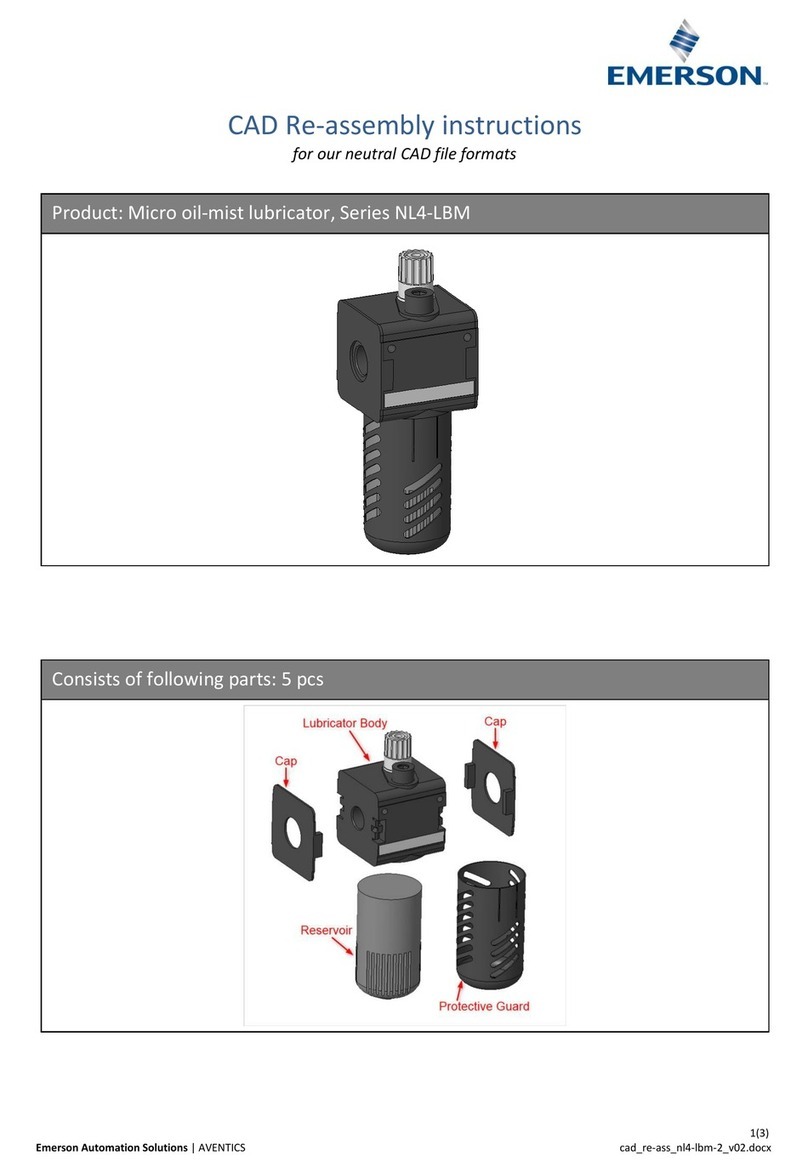Information concerning the EC Declaration of Conformity and the EC
Declaration of Incorporation
For the product(s) designated below:
Minimal quantity lubrication system
Product line:
VTEC
SKF herewith certifies that it conforms to the
pertinent safety requirements set forth in
the following Council Directive(s) for the har-
monization of the laws of the Member
States...
• Machinery Directive 2006/42/EC
Note:
1 This declaration certifies conformity with
the aforementioned directive(s), but does
not contain any assurance of properties.
2 The safety instructions in the owner’s
manual must be observed.
3 The certified product must not be started
up until it is confirmed that the equip-
ment, machinery, vehicle or the like in
which the product was installed meets the
provisions and requirements of the na-
tional directives to be applied.
4 Operation of the products on non-stan-
dard main voltage as well as nonobser-
vance of installation instructions can affect
the EMC properties and electrical safety.
SKF further declares that the above men-
tioned product:
• is meant for integration into a machinery /
for connection to other machinery accord-
ing to the EC-Machinery Directive
2006/42/EC, Appendix II Part B. Starting
up the product is not permissible until it is
assured that the machinery, vehicle or the
like in which the product was installed
meets the provisions and requirements of
the regulations set forth in the EC Direc-
tive 2006/42/EC.
• with reference to the EC Directive 97/23/
EC concerning apparatus subjected to
pressure, this product must only be used
as intended and according to the Owner’s
manual. Especially observe the following:
–Products of SKF must not be used in
conjunction with fluids, group I (hazard-
ous fluids), according to the definition of
article 2 paragraph 2 of the Directive
67/548/EC dtd. 27thJune, 1967; and
are not approved for application with
such fluids.
–None of the products manufactured by
SKF can be used in conjunction with
gases, liquefied gases, pressurized gas-
es in solution and fluids with a vapor
pressure exceeding normal atmospher-
ic pressure (1013 mbar) by more than
0,5 bar at their maximum permissible
temperature.
4
